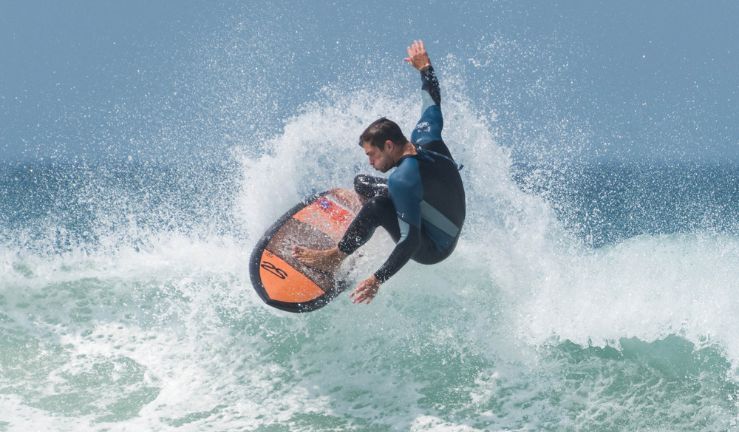

SURFBOARD BUYERS GUIDE
So, you want to learn to surf, great choice! You’re excited to hit the waves with your very own board but for beginners this can be a little daunting. Luckily our helpful surfboard buying guide covers what you need to know when choosing your first surfboard. Your first surfboard is one that you will remember for the rest of your exhilarating surfing career. It is important that you purchase a board that is not only well suited for your needs but that will also make your introduction to regular wave riding as fun as possible. Take a look at our helpful guide for advice on how to buy your first surfboard.
Lorem ipsum dolor sit amet, consectetur adipiscing elit. Ut in egestas ex. Interdum et malesuada fames ac ante ipsum primis in faucibus. Fusce lacinia quis velit ut maximus. Aliquam fringilla nibh tellus, vel bibendum mi ullamcorper sed. Aenean feugiat consectetur risus, nec egestas neque mollis at. Donec egestas enim ut libero vehicula viverra. Duis porttitor nulla eros, id tincidunt libero sollicitudin a. Aliquam ultrices lectus ut nisl faucibus, a consectetur sem pretium.
HEADING
Lorem ipsum dolor sit amet, consectetur adipiscing elit. Ut in egestas ex. Interdum et malesuada fames ac ante ipsum primis in faucibus. Fusce lacinia quis velit ut maximus. Aliquam fringilla nibh tellus, vel bibendum mi ullamcorper sed. Aenean feugiat consectetur risus, nec egestas neque mollis at. Donec egestas enim ut libero vehicula viverra. Duis porttitor nulla eros, id tincidunt libero sollicitudin a. Aliquam ultrices lectus ut nisl faucibus, a consectetur sem pretium.
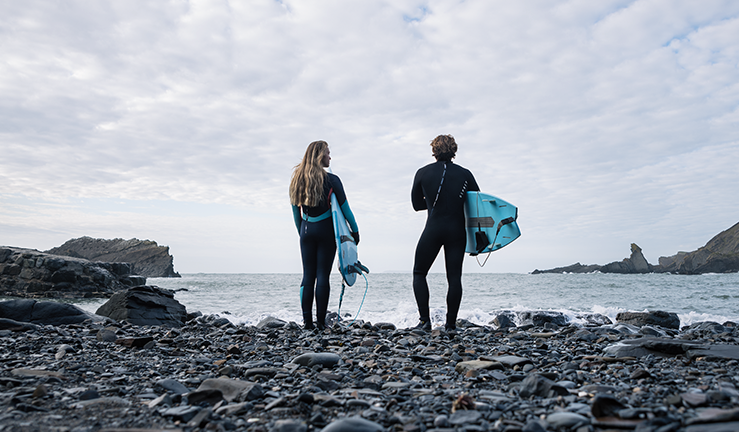

Lorem ipsum dolor sit amet, consectetur adipiscing elit. Ut in egestas ex. Interdum et malesuada fames ac ante ipsum primis in faucibus. Fusce lacinia quis velit ut maximus. Aliquam fringilla nibh tellus, vel bibendum mi ullamcorper sed. Aenean feugiat consectetur risus, nec egestas neque mollis at. Donec egestas enim ut libero vehicula viverra. Duis porttitor nulla eros, id tincidunt libero sollicitudin a. Aliquam ultrices lectus ut nisl faucibus, a consectetur sem pretium.
Lorem ipsum dolor sit amet, consectetur adipiscing elit. Ut in egestas ex. Interdum et malesuada fames ac ante ipsum primis in faucibus. Fusce lacinia quis velit ut maximus. Aliquam fringilla nibh tellus, vel bibendum mi ullamcorper sed. Aenean feugiat consectetur risus, nec egestas neque mollis at. Donec egestas enim ut libero vehicula viverra. Duis porttitor nulla eros, id tincidunt libero sollicitudin a. Aliquam ultrices lectus ut nisl faucibus, a consectetur sem pretium.
Lorem ipsum dolor sit amet, consectetur adipiscing elit. Ut in egestas ex. Interdum et malesuada fames ac ante ipsum primis in faucibus. Fusce lacinia quis velit ut maximus. Aliquam fringilla nibh tellus, vel bibendum mi ullamcorper sed. Aenean feugiat consectetur risus, nec egestas neque mollis at. Donec egestas enim ut libero vehicula viverra. Duis porttitor nulla eros, id tincidunt libero sollicitudin a. Aliquam ultrices lectus ut nisl faucibus, a consectetur sem pretium.
Lorem ipsum dolor sit amet, consectetur adipiscing elit. Ut in egestas ex. Interdum et malesuada fames ac ante ipsum primis in faucibus. Fusce lacinia quis velit ut maximus. Aliquam fringilla nibh tellus, vel bibendum mi ullamcorper sed. Aenean feugiat consectetur risus, nec egestas neque mollis at. Donec egestas enim ut libero vehicula viverra. Duis porttitor nulla eros, id tincidunt libero sollicitudin a. Aliquam ultrices lectus ut nisl faucibus, a consectetur sem pretium.
HEADING
Lorem ipsum dolor sit amet, consectetur adipiscing elit. Ut in egestas ex. Interdum et malesuada fames ac ante ipsum primis in faucibus. Fusce lacinia quis velit ut maximus. Aliquam fringilla nibh tellus, vel bibendum mi ullamcorper sed. Aenean feugiat consectetur risus, nec egestas neque mollis at. Donec egestas enim ut libero vehicula viverra. Duis porttitor nulla eros, id tincidunt libero sollicitudin a. Aliquam ultrices lectus ut nisl faucibus, a consectetur sem pretium.
1. Choosing a Surfboard
For a novice who is new to surfing, choosing your first board can be daunting. You might be tempted to go with the coolest shape or design, but this can lead to real disappointment when you paddle out and find the board isn’t right for you. Here’s a quick way to decide which board will suit you.


2. What Type Of Surfboards Are There?
Also known as ‘foamies’ or ‘softboards’, foamboards are perfect for those just starting out in the world of wave riding. These lightweight boards make it easy to catch waves, stand up on and they offer super stability in the water. Soft surfboards are the perfect entry level surfboard as they are less likely to cause injury to you and your fellow surfers.
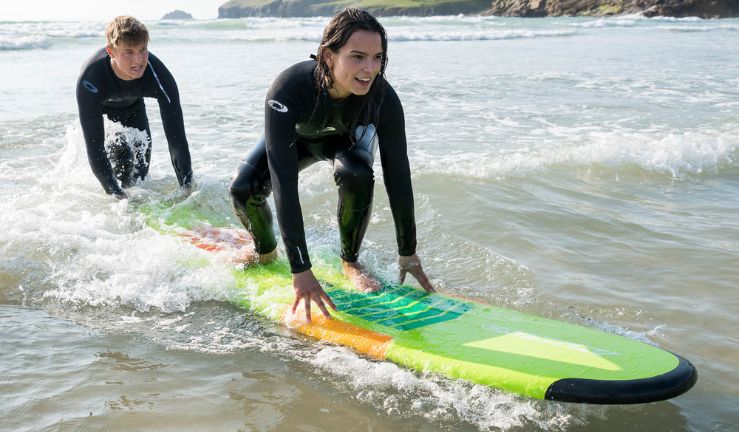

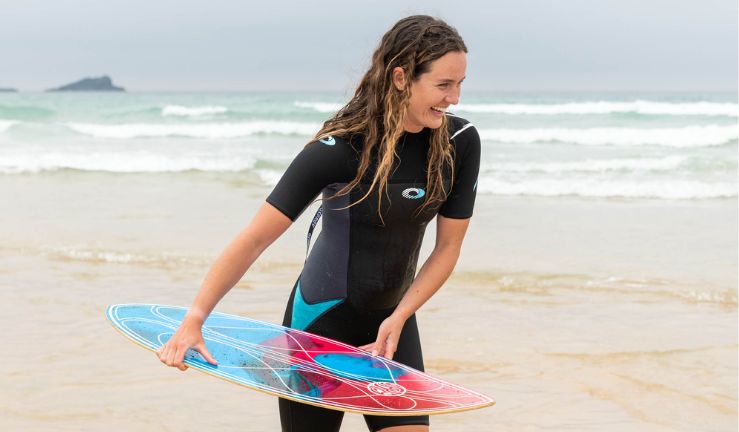

Skimboards are a great board for both surfers and water sports enthusiasts. Created to take advantage of the waves that were too fast or shallow for surfing, skimboarding is ideal for the British Coastline. All you need to do is use the shallow layer of water left by the waves, throw your board down and jump on!
Whether you’re looking to take your first steps into wave riding before transitioning into stand-up surfing, or you’re a seasoned surfer looking for a new challenge, Bodyboarding is a great sport for all abilities. Great for both adults and kids, our Osprey bodyboards suit all styles and capabilities. All Osprey bodyboards are made from high quality materials and feature an innovative design.
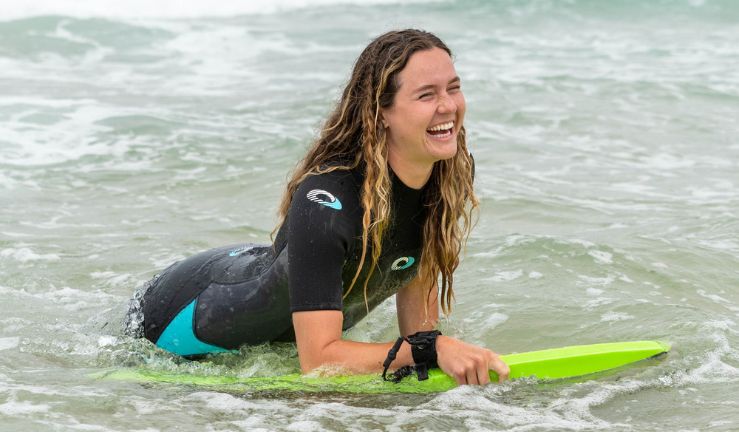

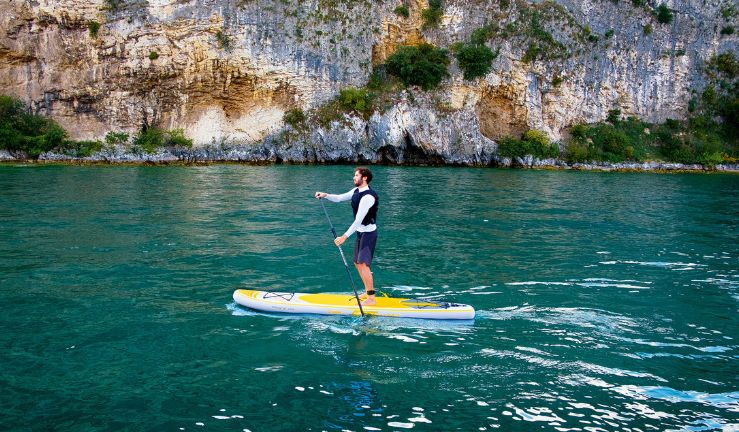

The newest addition to the surfboarding world, SUP or stand up paddleboarding is the perfect mode of transport for those who love to explore the sea, rivers, and lakes. Normally ranging from 10 to 12 feet and providing you with great width for better balance, the SUP lets you surf both big and small waves with the use of a paddle. Due to its design and addition of a paddle it also offers you the ability to cruise around lakes, canals or in the sea when the surf is flat.
3. What Surfboards Are Best For Beginners and Kids?
When choosing a surfboard for a complete novice, the golden rule is that size is everything! Generally, the bigger the board, the better as longer and wider boards offer beginners more stability in the water. The material composition of the board is another important factor to consider. There are two types of surfboard construction available – soft and hard surfboards.
SOFT & FOAM SURFBOARDS FOR BEGINNERS
Soft or foam surfboards are a great choice for beginners. New surfers, families and kids find them a great board to use, allowing them to catch smaller, messier waves close to the shore without forking out a heap of cash to experience the thrill. Check out the list of benefits below, associated with soft surfboards and find out why they are the best surfboard for beginners.
Less Chance of Injury
Surfing at its best is incredibly fun. Once you’re in the water you may never want to get out! It is important that your introduction to regular surfing remains this way. As a beginner it is likely you may "wipe out” pretty regularly. This is fine and not something to worry about; even the best surfers were novices once. However, it is important that you are protected so that you stay as safe as possible whilst you learn the ropes. Foam boards are ideal for this as they are softer and therefore reduce the chance of injury on impact.
Easier to Catch Waves
Starting out is all about catching that mythical first wave on your new board. It can be frustrating at the start if you keep missing waves that other riders are catching. A foam surfboard helps to prevent this as its size and volume makes it easier to consistently catch waves early and its increased stability means you can stay on them for longer.
Faster Learning
A longer board will give you much more stability when practising standing up and are much more forgiving than shortboards if you get your foot placement slightly wrong. Shortboards may look cooler and more streamlined, but they are going to be very tricky to learn on and you will spend most of the time in the water instead of learning to ride waves. The volume of our foam boards can help you to develop good habits for when you eventually scale down to a smaller board, allowing you to become a better surfer in the long run.
Long Term Usage
Foam boards make for an excellent investment when it comes to purchasing your first surfboard. They offer great value since they are very durable and last for a very long time. Additionally, even as your surfing ability advances there is always the opportunity to use a big board when the waves are too small for shorter boards, so you can use it for years to come.
Design
Whilst functionality is of up-most importance your first surfboard is one you will no doubt cherish. As a result, the design of your foam board should be eye-catching and allow you to stand out amongst the crowds of other surfers. Osprey offers a range of stylish designs to suit all tastes.
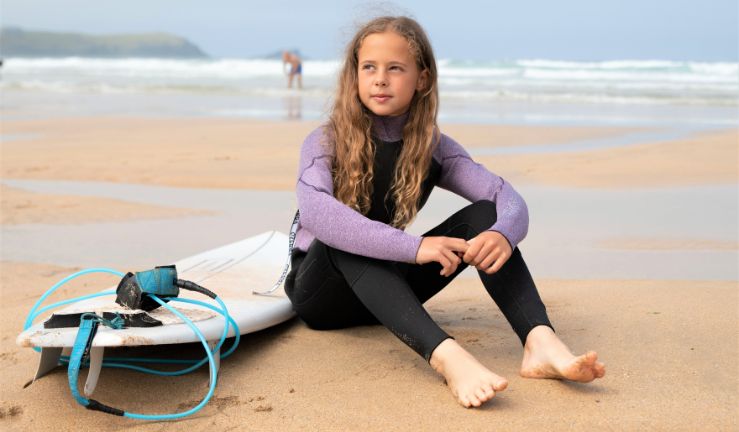

4. Which Surfboards Are Best For Intermediate/Advanced Riders?
If you're looking to take your surfing to the next level, or if you feel that you've accomplished all you can accomplish on your longboard or funboard, then a shortboard might be for you.
Shortboards
The advantage of shortboards is that they offer manoeuvrability in bigger, faster waves (that will generally be difficult for bigger boards to handle) allowing for greater turning ability and the added ability of being able to duck dive through a breaking wave. However, they do this at the sacrifice of speed and wave catching ability, you’ll have to paddle a lot more to get into the wave, and they won’t work well on smaller breaks that longboards will eat up.
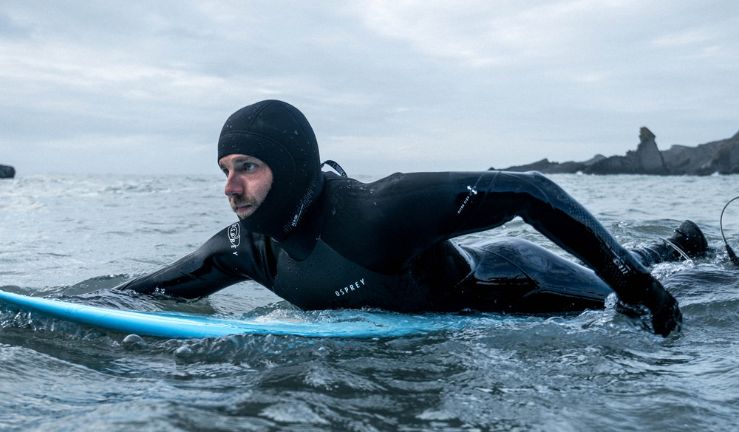

5. Which Size Surfboard is Best for an Adult?
Foam surfboards are also great for adults too! Beginners love how easy it is to catch a wave on a foamie and are up and riding in no time, whilst intermediates and even skilled surfers can make use of a foam board when the waves are small. A rider’s weight will affect which board is best for them. You can find some details below on which size board would be best.
Surfboards for Beginners
| Surfers Weight |
Softboard |
| < 30kg |
5'5" - 5'8" |
| 30 - 40kg |
5'8" - 6'2" |
| 40 - 50kg |
6'2" - 7'0" |
| 50 - 60kg |
7'0" |
| 60 - 70kg |
8'0" |
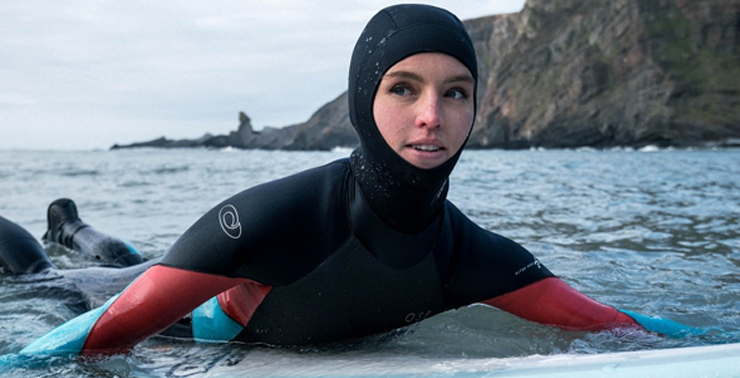

6. What Accessories Are Available For A Surfboard?
There are many different accessories that you can use to customise, care, or transport your surfboard. Take a look at the main ways you can put your own unique stamp on your board and take it to the next level.
Surfboard Leash
Your leash is what tethers you to your board. As a beginner this is vitally important as you will be falling off your board (a lot!). It will keep your board close to you when you wipe out preventing loss or damage to the board as well as minimising potential danger to other surfers from a loose board. Equally, keeping your board close to you when you fall off provides you with extra buoyancy to keep you afloat.
Surfboard Fins
Fins help to make the board go straight and are used for turning. They are an essential part of your board.
Surfboard Bag
The chances are you will be travelling a reasonable amount with your surfboard over the years therefore it is important to keep it protected. A board bag can prevent damage whilst also providing you with a convenient way to get around with your board.
Waterproof Car Seat Covers
It is easy to overlook the damage that surfing activities may have on your car, especially if you have small children who will be hitting the waves! Protecting your vehicle with a couple of well-placed car seat covers will help protect your seats from salt, sea and sand!
Surfboard Nose Guard
A surfboard nose guard will help to prevent damage to your board when transporting it around.
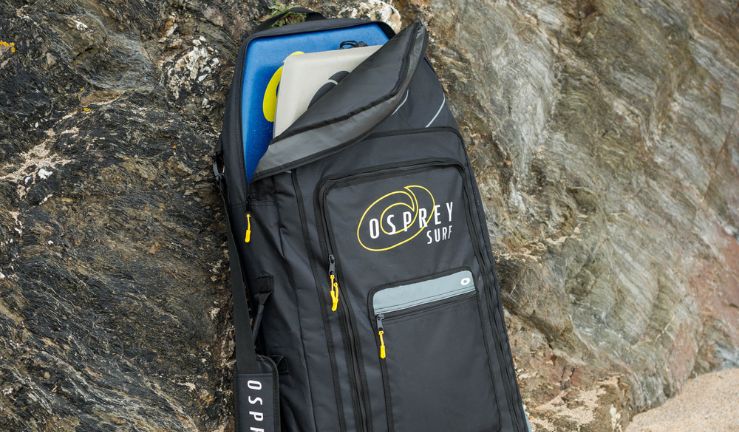

7. What Makes Up A Complete Surfboard?
There are numerous different elements which make up a complete surfboard. Each provide different qualities and work together to provide unique board performance. Find out everything from what the different types of decks are to what a ‘rail’ is with our overview.
SURFBOARD DECK
The Deck is the top of the surfboard that you lie on and (hopefully!) stand up on when surfing. There are three main surfboard deck types to choose from: Dome, Flat and Step.
1. Dome Deck: This is the most common type of deck. A domed shape enables more volume to be displaced towards the centre of the board. By doing this buoyancy is increased.
2. Flat Deck: The rails (edge) of a flat deck board are boxier and sharper than a dome deck. These decks often offer increased flex and a snappier feel. Flat decks can however be weaker and snapped if you’re careless in the break.
3. Step Deck: Featuring thinner rails, has added stiffness and strength. The result is a strong board, perfect for hard landings.
SURFBOARD NOSE
The nose is the front tip of the surfboard which sits out of the water. The shape of the nose varies according to the type of surfboard you choose. There are two main types of surfboard nose: Rounded and Pointed.
1. Rounded Nose : A rounded nose makes catching waves and balancing easier but they are harder to manoeuvre and duck dive under waves.
2. Pointed Nose: A pointed nose is great for duck diving under waves and is usually used on high-performance boards
SURFBOARD LEASH
Your leash is what tethers you to your board. As a beginner this is vitally important as you will be falling off your board (a lot!). It will keep your board close to you when you wipe out preventing loss or damage to the board as well as minimising potential danger to other surfers from a loose board. Equally, keeping your board close to you when you fall off provides you with extra buoyancy to keep you afloat.
SURFBOARD FINS
Fins help to make the board go straight and are used for turning. They are an essential part of your board; prior to fins the only way to change direction was by putting your feet into the water!
SURFBOARD TAIL
The tail is the rear of the board and is available in a variety of different shapes, each of which influence acceleration and control. There are a number of different shapes and sizes to choose from to give you the performance you require for certain conditions and wave types.
1. Pin Tail: With the narrowest width of all tails, it really does live up to its name. With a narrow width there is a reduced surface area which offers the most traction of any tail. This is great for dropping on big waves where control is more important than agility. Pintails can be difficult to manoeuvre and therefore aren’t great for smaller waves, where more lift is needed.
2. Round Tail: The round tail is similar to the pin tail but provides more surface area and bounce, providing the board with great lift. A curved shape will however result in less agile turning compared to a square tail.
3. Square Tail: The earliest tail design, the square tail provides great stability when catching waves and allows you to dig in, giving you great pivotal turns.
4. Swallow Tail: Great for smaller waves, a swallow tail provides excellent control and bite. The greater surface area also gives it the ability to maintain speeds.
5. Squash Tail: Common amongst shortboards, the square edge makes the board very responsive and agile on steep and soft waves.
RAILS
This is the outer edge of the surfboard. The rail can vary in thickness and impact speed and turning.
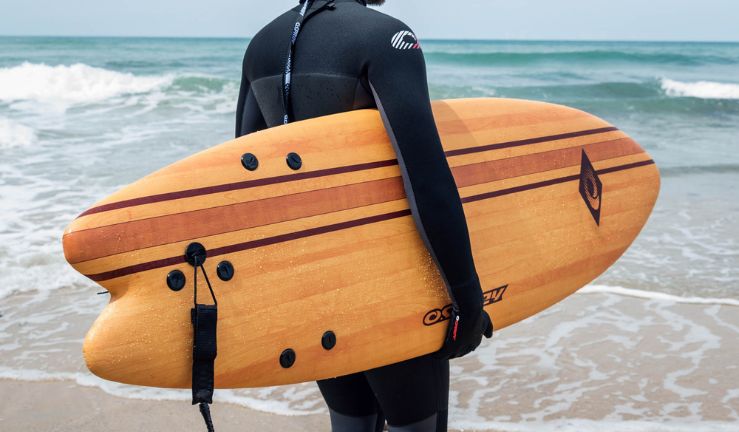

8. How To Look After Your Surfboard
So you've bought a brand spanking new surfboard and you’re all set to start riding waves! But before you do it should be worth taking note of how to look after your new board to maximise its lifespan. Check out our top tips below for maintaining your surfboard.
AVOID LEAVING YOUR BOARD IN THE SUN OR IN PLACES OF EXTREME HEAT
Leaving it out to cook even if in a bag will result in weakening of the outer layer and cracking which could lead to water entry causing delamination over time; this is where the outer coating separates from the foam core. It will also cause your once pristine looking board to become a sickly yellowish version of its former self.
KEEP YOUR SURFBOARD STORED SAFELY
Don't leave your board upright leaning against things, all it takes is a slip and it can topple over resulting in cracks and costly repairs. Store it indoors, horizontally with the fins facing up, preferably on a rack and in a good padded board bag where possible. Also it’s best not to store your board when wet as this can cause delamination over time.
REPAIR YOUR BOARD QUICKLY
Surfing a damaged board without repairing it will slowly but surely allow for more and more water to enter and get into the foam core. Depending on how serious the damage is, there are easy and affordable ways to get your surfboard up and running again! Some of these fixes include:
There are vinyl repair stickers available to seal dings but these should only be considered a temporary fix.
The majority of small dings can be repaired using UV solar resin, which is available at most surf shops.
Ensure your board is dry before you attempt fixing a ding, you don’t want to run the risk of water getting into the foam core and sealing it in.
Cut away, then sand the damaged area using sand paper, smoothing it out well will make for a tidy repair. Keep your board out of the sun at this point whilst repairing it.
Fill the smoothed out area with the resin then leave to dry in the sun, once dry re-sand until the surface is smooth and even with the surrounding surface.
In the event of a bad ding, then bite the bullet and take it to a surfboard shaper or the ding repair guru at your local surf shop. It will ensure that you get the best fix available for your board which will prolong its lifespan.
WASH YOUR BOARD
Make sure you rinse your board off with fresh water as soon as possible after your session. Salt will cause damage over time if left.
TRANSPORT YOUR BOARD CAREFULLY
Be sensible when transporting your board to the beach, especially if done by vehicle. Not securing your board to the roof rack properly or having it sticking out of windows can result in your board suddenly shrinking by a couple of feet and another driver gaining half a surfboard! Transporting it in a bag and on a surfboard rack is also a safer option than without as this will minimise the potential for annoying dings in transit. Be sure not to over tighten the straps on a soft rack as this could cause a puncture in the outer coating (pressure ding) but do make it secure enough that it won’t take off when the vehicle is in motion!
WATCH YOUR FINS
Be mindful of shallow water and fins! Riding your board all the way into the soft sand can result in fins getting stuck and breaking which can be hazardous for you! (broken fins can be sharp!) Likewise when riding into shore be aware of rocks and hard parts of the reef, these can leave a lasting mark on you and your board.
